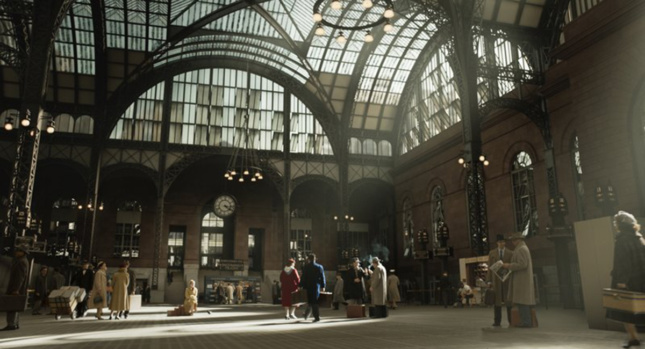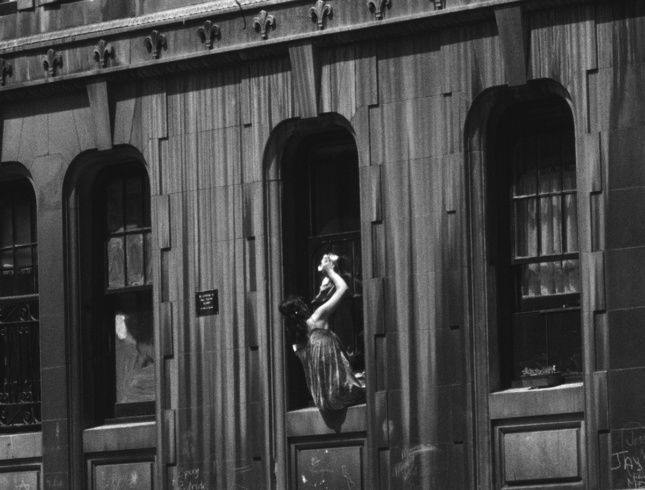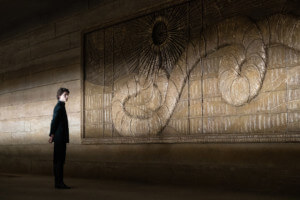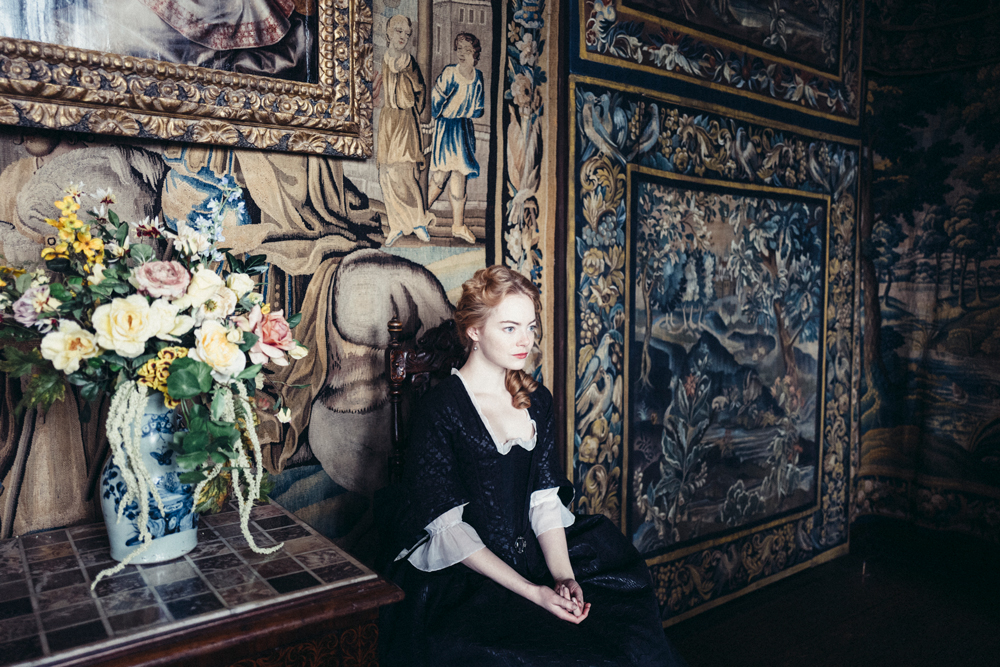The 57th New York Film Festival just ended, but luckily many of the films that feature architecture as a main character will be released in theaters or available online. Here’s a breakdown of the must-see flicks where cities takes center stage:
Motherless Brooklyn

A fictionalized Robert Moses called Moses Randolph (played by Alec Baldwin), drives the plot of Motherless Brooklyn, a film by and starring Edward Norton, scion of the real estate Rouse family. It’s set in the 1950s in what he calls “the secret history of modern New York, with…the devastation of the old city from neighborhoods right up to Penn Station, perpetrated at the hands of an autocratic, almost imperial force.” That ruthless force is Randolph, Commissioner of Parks, Buildings and an “Authority.” For reference, the Triborough Bridge can be seen through his office window.
In the film, Randolph plans slum clearance in Fort Greene, Brooklyn, just as he has just done in Tremont in the Bronx, which is protested by Gabby Horowitz (played by Cherry Jones), a Jane Jacobs stand-in. Randolph is at the root of a murder, which Norton’s character, a gumshoe with Tourette’s syndrome, is investigating. The film treats us to actual locations: we drive by the Jones Beach Water Tower, hold a rally in Washington Square, and we even visit (in CGI) the original Penn Station, demolished under Moses.
Free Time

Free Time, a documentary set in the same period, is a real-life counterweight to Motherless Brooklyn. It celebrates neighborhoods that could be in danger of Randolph/Moses’s slum clearance gentrification plans. The film opens with a sequence of carved stone architectural ornaments, which serve as a leitmotif throughout this black-and-white-filmed poem that was shot between 1958 to 1960 and newly edited by now 88-year old filmmaker Manfred Kirschheimer. With shots filmed in Washington Heights, Hell’s Kitchen, and West 83 Street, it shows construction workers tearing down buildings and putting up new ones, bridges, and, most of all, neighborhoods.
Parasite

Another kind of ruthlessness is symbolized by the architecture of contrasts in Parasite, winner of the Palme d’Or at Cannes, directed by Bong Joon-ho. The struggling Kim family occupies a grim basement apartment in Seoul. They attach themselves to the Parks, a wealthy family, and their high modernist house built by a prominent (fictional) Korean architect named Namgoong, who built it for himself before moving to Paris. The Parks identify themselves with the architect’s creativity and maintain the modernist aesthetic. The man levels of the house, including a hidden subterranean fallout shelter, factor into the plot, as does the plate-glass facade leading to the walled-in garden, an oasis in the midst of the capital city. The film is a tale of class conflict, deception, and home.
More to see

Other films that feature architecture include Pain and Glory by Pedro Almodóvar in which the main character, a filmmaker (played by Antonio Banderas), lives in an art-filled and colorful Madrid apartment with sliding glass walls after growing up in a “cave-like” apartment lit by a skylight. Martin Scorsese sets his new film, The Irishman, in mid-century Philadelphia, New York, and Detroit while Noah Baumbach uses the many apartments and theaters of New York as a contrast to the endless houses, offices, and restaurants of Los Angeles in Marriage Story.
Of the short films featured in the festival’s Projections category, Kansas Atlas (Peggy Ahwesh) shows split-screen aerials in the dead center of the United States, with land tracts, houses, factories, silos, and turbines, as SIGNAL 8 (Simon Liu), provides a psychedelic, fast-cut journey through the urban archeology and construction sites of Hong Kong as a storm approaches. A Topography of Memory (Burak Çevik) features CCTV footage of Istanbul and Houses (for Margaret) (Luke Fowler) is about a woman who doesn’t want to be confined by a house, but loves going into buildings.










